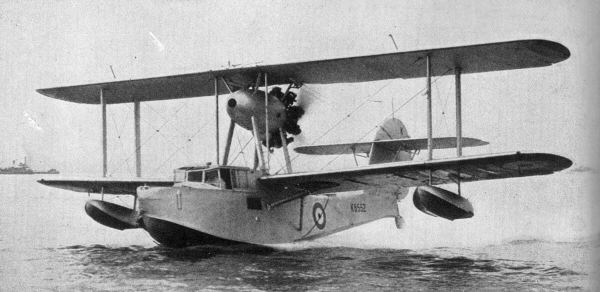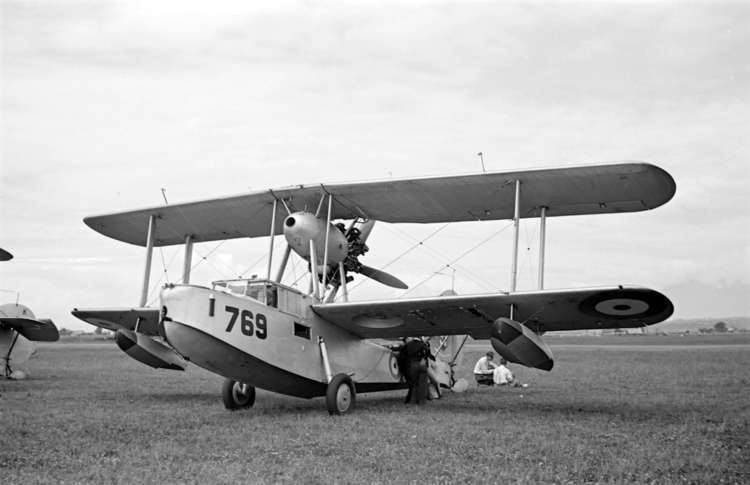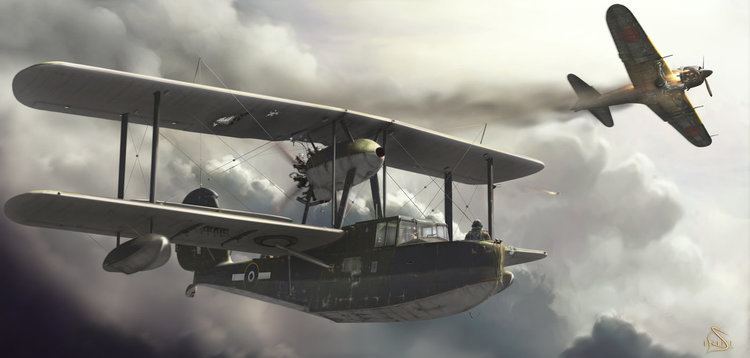Top speed 217 km/h Wingspan 14 m Engine type Bristol Pegasus | Length 11 m Introduced 1935 Designer R. J. Mitchell | |
 | ||
Supermarine walrus mk 1 plastic model kit
The Supermarine Walrus (originally known as the Supermarine Seagull V) was a British single-engine amphibious biplane reconnaissance aircraft designed by R. J. Mitchell and first flown in 1933. It was operated by the Fleet Air Arm (FAA) and also served with the Royal Air Force (RAF), Royal Australian Air Force (RAAF), Royal New Zealand Navy (RNZN) and Royal New Zealand Air Force (RNZAF). It was the first British squadron-service aircraft to incorporate in one airframe a fully retractable main undercarriage, completely enclosed crew accommodation and all-metal fuselage.
Contents
- Supermarine walrus mk 1 plastic model kit
- Supermarine walrus 90 size rc model crash
- Development
- Operational history
- Air sea rescue
- Experimental use
- Other users
- Civil use
- Variants
- Military operators
- Civilian operators
- Surviving aircraft
- Specifications Supermarine Walrus
- References

Designed for use as a fleet spotter to be catapult launched from cruisers or battleships, the Walrus was later employed in a variety of other roles, most notably as a rescue aircraft for downed aircrew. It continued in service throughout the Second World War.

Supermarine walrus 90 size rc model crash
Development

The Walrus was initially developed as a private venture in response to a 1929 Royal Australian Air Force (RAAF) requirement for an aircraft to be catapult-launched from cruisers, and was originally called the Seagull V, although it only resembled the earlier Supermarine Seagull III in general layout. Construction was started in 1930 but owing to Supermarine's other commitments it was not completed until 1933.

The single-step hull was constructed from aluminium alloy, with stainless-steel forgings for the catapult spools and mountings. Metal construction was used because experience had shown that wooden structures deteriorated rapidly under tropical conditions. The wings, which were slightly swept back, had stainless–steel spars and wooden ribs and were covered in fabric. The lower wings were set in the shoulder position with a stabilising float mounted under each one. The horizontal tail-surfaces were positioned high on the tail-fin and braced on either side by N struts. The wings could be folded on ship, giving a stowage width of 17 feet 6 inches (5.33 m). The single 620 hp (460 kW) Pegasus II M2 radial engine was housed at the rear of a nacelle mounted on four struts above the lower wing and braced by four shorter struts to the centre-section of the upper wing. This powered a four-bladed wooden propeller in pusher configuration. The engine nacelle contained the oil tank, arranged around the air intake at the front of the nacelle to act as an oil cooler, and electrical equipment and had a number of access panels for maintenance. A supplementary oil cooler was mounted on the starboard side. Fuel was carried in two tanks in the upper wings. The pusher configuration had the advantages of keeping the engine and propeller further out of the way of spray when operating on water and reducing the noise level inside the aircraft. Also, the moving propeller was safely away from any crew standing on the front deck, which would be done when picking up a mooring line. The engine was offset by three degrees to starboard, to counter any tendency of the aircraft to yaw due to unequal forces on the rudder caused by the vortex from the propeller.

A solid aluminium tailwheel was enclosed within a small water-rudder, which could be coupled to the main rudder for taxiing or disengaged for takeoff and landing.
Although the aircraft typically flew with one pilot, there were positions for two. The left-hand position was the main one, with the instrument panel and a fixed seat, while the right-hand seat could be folded away to allow access to the nose gun-position via a crawl-way. An unusual feature was that the control column was not a fixed fitting in the usual way, but could be unplugged from either of two sockets at floor level. It became a habit for only one column to be in use; and when control was passed from the pilot to co-pilot or vice versa, the control column would simply be unplugged and handed over. Behind the cockpit, there was a small cabin with work stations for the navigator and radio operator.
Armament usually consisted of two .303 in (7.7 mm) Vickers K machine guns, one in each of the open positions in the nose and rear fuselage; with provision for carrying bombs or depth charges mounted beneath the lower wings. Like other flying boats, the Walrus carried marine equipment for use on the water, including an anchor, towing and mooring cables, drogues and a boat-hook.
The prototype was first flown by "Mutt" Summers on 21 June 1933; five days later it made an appearance at the SBAC show at Hendon, where Summers startled the spectators (R. J. Mitchell among them) by looping the aircraft. Such aerobatics were possible because the aircraft had been stressed for catapult launching. On 29 July Supermarine handed the aircraft over to the Marine Aircraft Experimental Establishment at Felixstowe. Over the following months extensive trials were carried out, including shipborne trials aboard Repulse and Valiant carried out on behalf of the Royal Australian Navy and catapult trials carried out by the Royal Aircraft Establishment at Farnborough, becoming the first amphibious aircraft in the world to be launched by catapult with a full military load, piloted by Flight Lieutenant Sydney Richard Ubee.
The strength of the aircraft was demonstrated in 1935, when the prototype was attached to the battleship Nelson at Portland. With the commander-in-chief of the Home Fleet, Admiral Roger Backhouse, on board the pilot attempted a water touch-down, forgetting that the undercarriage was in the down position. The Walrus was immediately flipped over but the occupants only had minor injuries; the machine was later repaired and returned to service. Soon afterwards, the Walrus became one of the first aircraft to be fitted with an undercarriage position indicator on the instrument panel. Test pilot Alex Henshaw later stated that the Walrus was strong enough to make a wheels-up landing on grass without much damage (he also commented that it was "the noisiest, coldest and most uncomfortable" aircraft he had ever flown).
When flying from a warship, the Walrus would be recovered by touching-down alongside, then lifted from the sea by a ship's crane. The aircraft's lifting-gear was kept in a compartment in the section of wing directly above the engine – one of the Walrus' crew would climb onto the top wing and attach this to the crane hook. Landing and recovery was a straightforward procedure in calm waters, but could be very difficult if the conditions were rough. The usual procedure was for the parent ship to turn through around 20° just before the aircraft touched down, thus creating a 'slick' to the lee side of ship on which the Walrus could alight, this being followed by a fast taxi up to the ship before the 'slick' dissipated.
The RAAF ordered 24 examples of the Seagull V in 1933, these being delivered from 1935. These aircraft differed from the prototype and the aircraft flown by the RAF in having Handley-Page slots fitted to the upper wings. This was followed by the first order for 12 aircraft from the RAF, placed in May 1935 with the first production aircraft, serial number K5772, flying on 16 March 1936. In RAF service the type was named the Walrus. Initial production aircraft were powered by the Pegasus II M2: from 1937 the 750 hp (560 kW) Pegasus VI was fitted.
Production aircraft differed in minor details from the prototype. The transition between the upper decking and the aircraft sides was rounded off, the three struts bracing the tailplane were reduced to two, and the trailing edges of the lower wing were hinged to fold 90° upwards rather than 180° downwards when the wings were folded, and the external oil cooler was omitted.
A total of 740 Walruses were built in three major variants: the Seagull V, Walrus I, and the Walrus II. The Mark IIs were all constructed by Saunders-Roe and the prototype first flew in May 1940. This aircraft had a wooden hull, which was heavier but had the advantage of using less of the precious wartime stockpiles of light metal alloys. Saunders-Roe would go on to build under license 270 metal Mark Is and 191 wooden-hulled Mark IIs.
The successor to the Walrus was the Supermarine Sea Otter – a similar but more powerful design. Sea Otters never completely replaced the Walruses, and served alongside them in the air-sea rescue role during the latter part of the war. A post-war replacement for both aircraft, the Supermarine Seagull, was cancelled in 1952, with only prototypes being constructed. By that time, helicopters were taking over from small flying-boats in the air-sea rescue role.
The Walrus was affectionately known as the "Shagbat" or sometimes "Steam-pigeon"; the latter name coming from the steam produced by water striking the hot Pegasus engine.
Operational history
The first Seagull V, A2-1, was handed over to the Royal Australian Air Force in 1935, with the last, A2-24 delivered in 1937. The type served aboard HMA Ships Australia, Canberra, Sydney, Perth and Hobart.
Walrus deliveries to the RAF started in 1936 when the first example to be deployed was assigned to the New Zealand division of the Royal Navy, on Achilles– one of the Leander-class light cruisers that carried one Walrus each. The Royal Navy Town-class cruisers carried two Walruses during the early part of the war and Walruses also equipped the York-class and County-class heavy cruisers. Some battleships, such as Warspite and Rodney carried Walruses, as did the monitor Terror and the seaplane tender Albatross.
By the start of World War II the Walrus was in widespread use. Although its principal intended use was gunnery spotting in naval actions, this only occurred twice: Walruses from Renown and Manchester were launched in the Battle of Cape Spartivento and a Walrus from Gloucester was used in the Battle of Cape Matapan. The main task of ship-based aircraft was patrolling for Axis submarines and surface-raiders, and by March 1941, Walruses were being deployed with Air to Surface Vessel (ASV) radars to assist in this. During the Norwegian Campaign and the East African Campaign, they also saw very limited use in bombing and strafing shore targets. In August 1940, a Walrus operating from Hobart bombed and machine-gunned an Italian headquarters at Zeila in Somalia.
By 1943, catapult-launched aircraft on cruisers and battleships were being phased out; their role at sea was taken over by much-improved radar. Also, a hangar and catapult occupied a considerable amount of valuable space on a warship. However, Walruses continued to fly from Royal Navy carriers for air-sea rescue and general communications tasks. Their low landing speed meant they could make a carrier landing despite having no flaps or tailhook.
Air-sea rescue
The Walrus was used in the air-sea rescue role in both the Royal Navy and the Royal Air Force. The specialist RAF Air Sea Rescue Service squadrons flew a variety of aircraft, using Spitfires and Boulton Paul Defiants to patrol for downed aircrew, Avro Ansons to drop supplies and dinghies, and Walruses to pick up aircrew from the water. RAF air-sea rescue squadrons were deployed to cover the waters around the United Kingdom, the Mediterranean Sea and the Bay of Bengal. Over a thousand aircrew were picked up during these operations, with 277 Squadron responsible for 598 of these.
Experimental use
In late 1939 two Walruses were used at Lee-on-Solent for trials of ASV (Air to Surface Vessel) radar, the dipole aerials being mounted on the forward interplane struts. In 1940 a Walrus was fitted with a forward-firing Oerlikon 20 mm cannon, intended as a counter-measure against German E-boats. Although the Walrus proved to be a stable gun-platform, the muzzle flash rapidly blinded the pilot, and the idea was not taken up.
Other users
Three Walruses N.18 (L2301), N.19 (L2302) and N.20 (L2303) were to be delivered on 3 March 1939, and used by Irish Air Corps as maritime patrol aircraft during the Irish Emergency of World War II. They were scheduled to fly from Southampton to Baldonnel Aerodrome, Ireland. N.19 made the trip successfully, but N.20 had to be rerouted to Milford Haven and N.18 and its crew of two (LT Higgins and LT Quinlan) were left with no choice but to go down during high seas causing damage to the hull. N.18 ditched near Ballytrent, just south of the former United States Naval Air Station, Wexford. It was decided to tow the N.18, with help of the Rosslare Harbour lifeboat and a local fishing boat to the launch slip once used for the Curtiss H-16s during WW1. It was then loaded on a truck to complete its journey to the Baldonnel Aerodrome where it was repaired. The Supermarine Walrus N.18 (also identified as L2301) is currently on display at the Fleet Air Arm Museum in Yeovilton, England and is one of only surviving 3 aircraft of the type.
A Walrus I was shipped to Arkhangelsk with other supplies brought on the British Convoy PQ 17. After sustaining damage it was repaired and supplied to the 16th air transport detachment. This sole Walrus flew to the end of 1943.
After the war, some Walruses continued to see limited military use with the RAF and foreign navies. Eight were operated by Argentina, two flew from the cruiser ARA La Argentina as late as 1958. Other aircraft were used for training by the French Navy's Aviation navale.
Civil use
Walruses also found civil and commercial use. They were briefly used by a whaling company, United Whalers. Operating in the Antarctic, they were launched from the factory ship FF Balaena, which had been equipped with a surplus navy aircraft catapult. The aircraft used were slightly modified; they were fitted with electrical sockets to power the electrically heated suits, worn by the crew under their immersion suits. A small, petrol-burning cabin heater was fitted to help keep the crews comfortable during flights that could last over five hours.
A Dutch whaling company embarked Walruses, but never flew them. Four aircraft were bought from the RAAF by Amphibious Airways of Rabaul. Licensed to carry up to ten passengers, they were used for charter and air ambulance work, remaining in service until 1954.
Variants
Military operators
Civilian operators
Surviving aircraft
Three examples survive in museums in addition to one that is privately owned.
Wreckage that is thought to be that of the Walrus assigned to the cruiser HMAS Sydney was photographed when the wreck of the vessel was rediscovered in 2008.
Specifications (Supermarine Walrus)
Data from Supermarine Walrus I & Seagull V Variants
General characteristics
Performance
Armament
